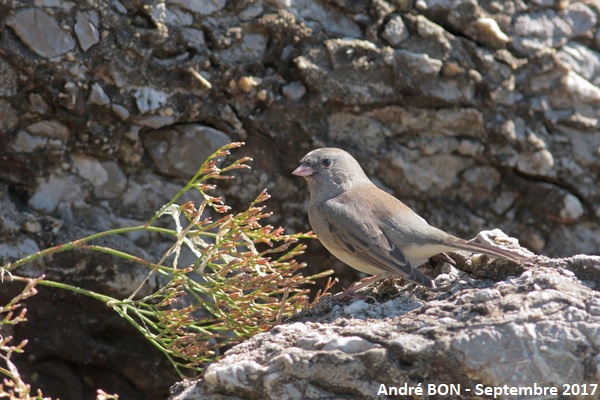
| Dark-eyed Junco (Junco hyemalis (Linnaeus, 1758)) |

|
|
Scientific name: Junco hyemalis (Linnaeus, 1758) Common name: Dark-eyed Junco French name: Junco ardoisé Order: Passeriformes Family: Passerellidae Size: Body size: 13 to 17.5 cm; Weight: 18 to 30 g; Wingspan: 18 to 25 cm. Habitat: Coniferous forests or mixed forests during the nesting period, forest edges, hedgerows, parks and gardens in winter. Food: Insects caught on the ground in summer, seeds and small fruits in winter. Nesting: The nest is a deep cup usually located on the ground hidden among vegetation. It is built by the female. There are 4 to 5 eggs per clutch. Migration: Populations in northern Canada and parts of the United States move to the south of the United States or Mexico in winter. Geographic area: North America except extreme north. |
The Dark-eyed Junco has many subspecies characterized by variations in plumage coloration. Adult males usually have slate-grey head, breast, and upperparts. The belly and the underside of the tail are white. The bill is light pink with a small dark spot at the tip. The slate grey colour is replaced by a much paler grey on females and the back is more brownish. The different subspecies show variations in the colour of the cap, flanks and back. |
| [To know more about the Dark-eyed Junco] [Top] |

|
The pale grey colour of the upperparts with brown on the back, a pretty pink conical bill. Here we have a female Dark-eyed Junco. |